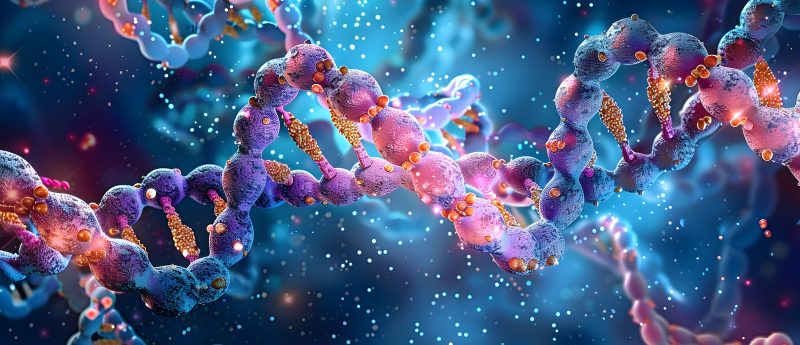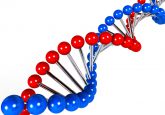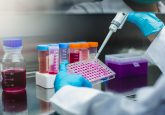Neil Henderson: oligonucleotide analysis and efficient methodologies

 Neil Henderson
Neil Henderson
I received my PhD in Rheumatology, studying the effect of Matrix Metalloproteinases (MMPs) on cartilage destruction, from University of Newcastle-upon-Tyne (2003), and moved to Division of Therapeutics & Molecular Medicine, University of Nottingham, to research MMPs in Airway Remodelling until 2006. After that, I joined AstraZeneca Charnwood (2006–2010), working within a GLP/GCP department, developing & validating ligand-binding-assays and analysing biomarkers in clinical samples, before moving to the AZ Personalised Healthcare & Biomarker group in Gothenburg, Sweden continuing with the challenge of biomarker analysis. In 2015, I joined the newly formed Nucleotide Bioanalysis Group (Gothenburg) providing analytical support to the progression of New Modality (Oligonucleotide) therapeutics in pre-clinical models.
Would you like to find out more about oliognucleotides? Check out our exclusive content:
1Could you please introduce yourself and summarize your career to date?
I am an Associate Principal Scientist within the Translational Biomarker and Bioanalysis (Drug Safety Metabolism) group at AstraZeneca (Gothenburg, Sweden). I have worked at AstraZeneca for 11 years, both in the UK (Charnwood) and (now) in Sweden (Gothenburg), assessing clinical biomarkers and more recently performing bioanalysis of oligonucleotide candidate drug molecules. Prior to joining AstraZeneca, I obtained my PhD at the Department of Rheumatology (University of Newcastle upon Tyne, UK) followed by a 3-year post-doctorate at the Division of Molecular Medicine (University of Nottingham, UK) investigating the role of matrix metalloproteinases in cartilage destruction and airway remodeling. I have always been interested in disease biology and the measurement of disease progression/amelioration through the assessment of biomarkers. My academic background provided me with training in the techniques and biological understanding that has been beneficial for my roles at AstraZeneca.
2What does your current role entail and describe the technologies that you use?
Within the Translational Biomarker and Bioanalysis group, part of our focus is upon the measurement of novel oligonucleotide therapies, including antisense oligonucleotides, anti-microRNA and modified messenger RNA. These, like other biological therapeutics, have the potential to target many previously untreatable diseases through the upregulation/downregulation of encoded proteins. In order to perform the drug safety measurements (e.g. PK, PK/PD, TK) for these therapeutics, our group use chromatographic methods (e.g. LC–MS), immunoassays (e.g. ELISA, Hybridisation ELISA, branched DNA [bDNA]) and hybrid methods (e.g. HPLC–FL). The choice of method is influenced by target molecule, concentration expected and any requirement to measure metabolites. For the majority of antisense oligonucleotide projects, the use of LC–MS (targeting the modified backbones) can be sufficient if the drug concentration is high enough. However, as these drug projects progress, the administered drug dose invariably becomes lower and therefore more sensitive methods incorporating labeled complimentary probes, are needed, such as hybridisation ELISA and HPLC–FL.
bDNA is currently our primary method, rather than RT–PCR, for assessing modified mRNA drug levels from in vivo samples. This method uses target-specific probes to amplify signal (as opposed to target, as is the case for RT–PCR) and performs in a similar manner to ELISA. One major advantage of bDNA is that samples, in most cases, do not need to be purified or converted to cDNA prior to analysis.
3What are the challenges of performing modified mRNA (PK) measurements?
A challenge of performing modified mRNA (PK) measurements from in vivo samples, particularly in blood, is the potential lability of the drug to circulating blood-nuclease enzymes. It is well known that the body is primed to destroy ‘non-protected’ mRNA in circulation as a defence mechanism against foreign RNA, such as viruses. In fact, a lot of research is being undertaken to identify optimal mechanisms of protection, such as lipid nanoparticle encapsulation, in order to prolong lifespan of mRNA drugs in vivo. For PK measurement of modified mRNA in blood and tissue samples, we want to ensure that the analyte survives the collection procedure. Therefore, we have investigated several options for preclinical samples and finally settled upon the use of Paxgene for whole blood or snap-freezing tissue, followed by processing with the Affymetrix bDNA reagents. We were able to demonstrate acceptable extraction efficiency for spiked mRNA using these approaches.
4What is your favourite aspect of your work?
For me, the fast pace of the projects and understanding and overcoming the bioanalytical challenges are what inspires me to work in this field.
In fact, the field of oligonucleotide bioanalysis, and hence the challenges, still feels extremely fresh. For instance, people have used methods (e.g. bDNA & RT–PCR) to study mRNA levels for years, but now we have to demonstrate that those methodologies can meet the performance expectations of regulators and show quantitative (rather than qualitative) concentration data on these types of molecules. For some analytes/matrices, these assays are going to struggle to meet current regulatory criteria and so people are going to have to develop strategies to meet these bioanalytical challenges. To help progress this field faster, active communication within the bioanalytical community is essential; through the sharing of experiences and knowledge, evidence-based scientific discussions can be had with regulators regarding what/how novel analytes are measured or studies are performed, as drug projects move further into the clinic. Indeed, the communicative and collaborative spirit with Moderna (MA, USA), Charles River (Edinburgh, UK) and MPI Research (MI, USA) during our implementation of bDNA as primary method of choice for modified mRNA, has been invaluable.
5What are your big plans for the next few years? What further investigations do you have planned?
In the next few years, we will be continuing to investigate methodologies that reduce the level of sample preparation but maintain/improve upon current sensitivities for both oligonucleotides and mRNA. This is an area that we feel will continue to develop across the industry. Moreover, our group are investing more energy into the use of HRMS instruments for use in bioanalysis and novel safety biomarker discovery.






